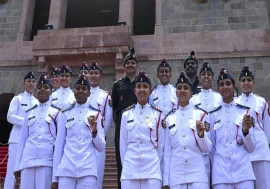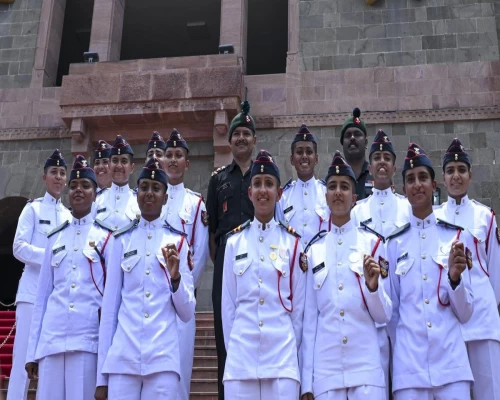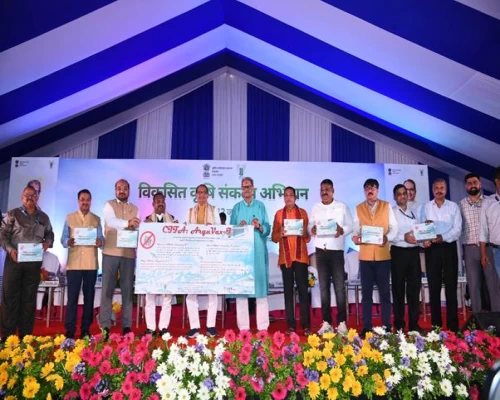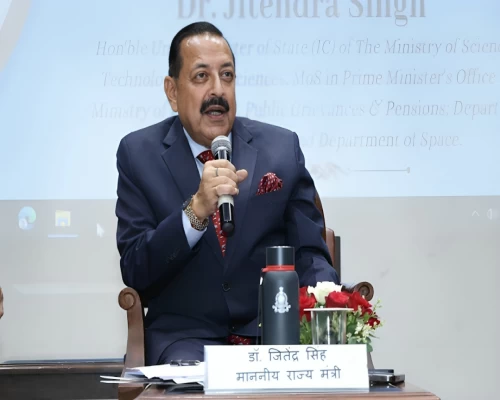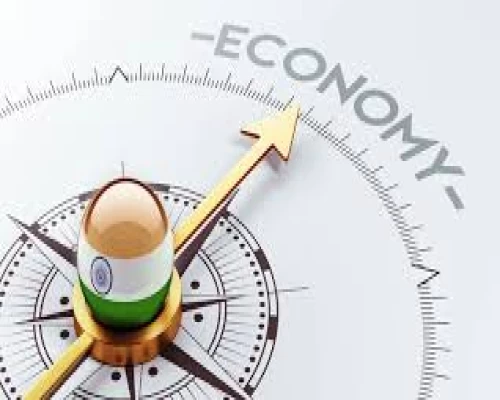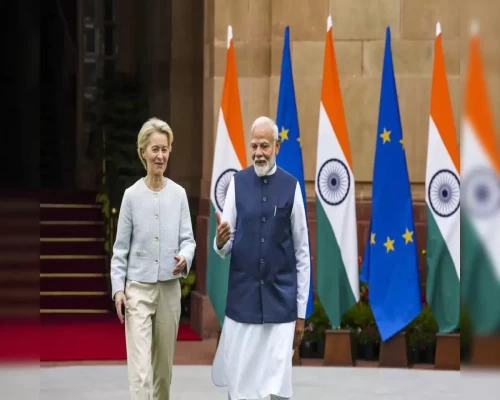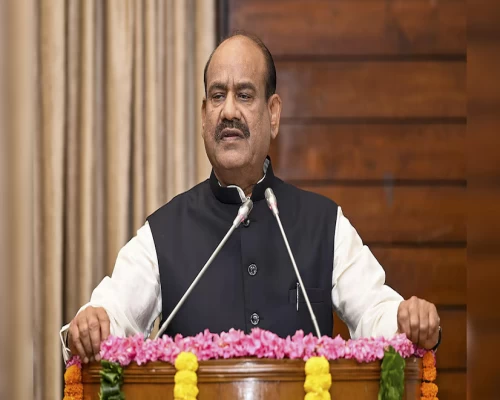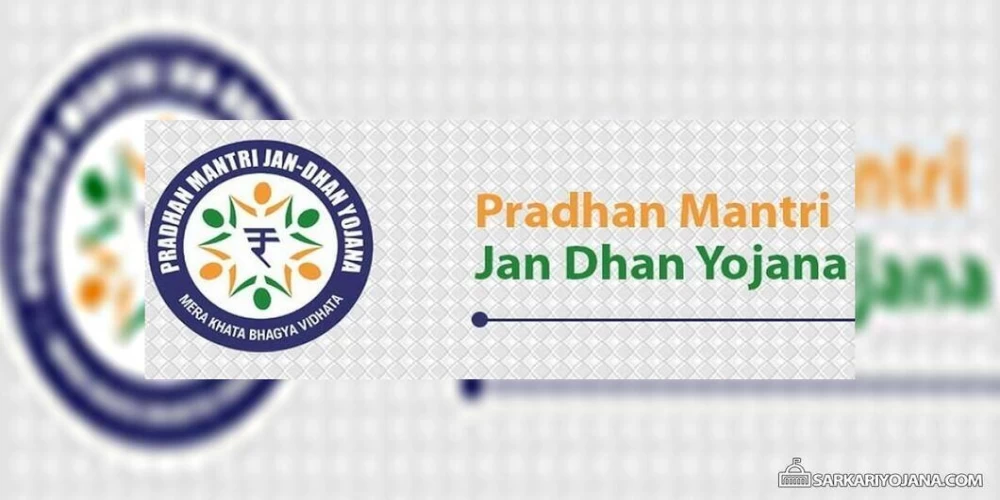
New Delhi: The Pradhan Mantri Jan Dhan Yojana (PMJDY), launched by Prime Minister Narendra Modi on 28th August 2014, completes a decade of successful implementation today.
As the largest financial inclusion initiative in the world, the Ministry of Finance continuously endeavours to support marginalised and economically backward sections through its financial inclusion interventions.
On this occasion, Union Minister for Finance and Corporate Affairs Nirmala Sitharaman, in a message, said, “Universal and affordable access to formal banking services is essential for achieving financial inclusion and empowerment. It integrates the poor into the economic mainstream and plays a crucial role in the development of marginalised communities.”
“By providing universal, affordable, and formal financial services — including bank accounts, small savings schemes, insurance, and credit — to the previously unbanked, PM Jan Dhan Yojana has transformed the banking and financial landscape of the country over the last decade,” the Union Finance Minister said.
“The success of the initiative is reflected in 53 crore people having been brought into the formal banking system through the opening of Jan Dhan Accounts. These bank accounts have garnered a deposit balance of Rs. 2.3 lakh crore and resulted in the issuance of over 36 crore free-of-cost RuPay cards, which also provide a ₹2 lakh accident insurance cover. Notably, there are no account opening fees or maintenance charges, and no requirement to maintain a minimum balance,” Sitharaman said.
“It is heartening to note that 67% of the accounts have been opened in rural or semi-urban areas, and 55% of accounts have been opened by women,” the Union Finance Minister said.
“The consent-based pipeline created through the linking of Jan Dhan-Mobile-Adhaar has been one of the most important pillars of the financial inclusion ecosystem. It has enabled swift, seamless, and transparent transfer of Government welfare schemes to eligible beneficiaries and promoted digital payments,” Sitharaman said.
In his message on the occasion, Union Minister of State for Finance Pankaj Chaudhary said, “PMJDY is not only a scheme, but a transformation movement that has enabled financial independence for many of the unbanked population and has instilled a sense of financial security.”
“The Prime Minister, in his 2021 Independence Day speech, announced that every household should have a bank account and every adult should have insurance and pension coverage. With the continuous efforts in this direction through various saturation drives carried out across the country, we have achieved near saturation in bank accounts and there has been continuous increase in insurance and pension coverage across the country,” Chaudhary said.
“With the support of all stakeholders, banks, insurance companies and state Governments, we are moving towards a more financially inclusive society, and PMJDY will always be remembered as a game changer for financial inclusion in the country. Pradhan Mantri Jan Dhan Yojana not only serves as an important example of Governance in Mission Mode but also demonstrates what a Government can achieve if it is committed to the welfare of the people,” Chaudhary said.
PMJDY provides one basic bank account for every unbanked adult. For this account, there is no need to maintain any balance, and no charges are levied on this account. A free-of-cost RuPay Debit card with in-built accident insurance cover of Rs. 2 lakh is also provided to promote digital transactions. PMJDY account holders are also eligible for an overdraft of up to Rs. 10,000 to cover exigencies.
The journey of PMJDY-led interventions undertaken over the last decade has, in effect, produced both transformational and directional change, thereby making the banks and financial institution ecosystem capable of delivering financial services to the last person of the society — the poorest of the poor.
The PMJDY accounts have not only been instrumental in receiving Direct Benefit Transfers but also serve as a platform for hassle-free subsidies/payments made by the government to the intended beneficiary without any middlemen, seamless transactions, and savings accumulation. Moreover, they have been crucial in providing life and accident insurance to millions of unorganised sector workers through Jan Suraksha schemes (micro insurance schemes).
The Jan-Dhan Aadhaar and mobile (JAM) trinity, with PMJDY as one of its pillars, has proven to be a diversion-proof subsidy delivery mechanism. Through JAM, under Direct Benefit Transfer, the government has successfully transferred subsidies and social benefits directly into the bank accounts of the underprivileged.
The successful implementation of PMJDY during the last 10 years has seen the achievement of many milestones. The major aspects and achievements of the PMJDY are presented below:
PMJDY Accounts: 53.13 crore (as on 14th August 2024) As of 14th August 2024, the number of total PMJDY Accounts: 53.13 crore; 55.6% (29.56 crore) Jan-Dhan account holders are women, and 66.6% (35.37 crore) Jan Dhan accounts are in rural and semi-urban areas.
Deposits under PMJDY accounts – Rs. 2.31 Lakh Crore (as on 14th August 2024) Total deposit balances under PMJDY Accounts stand at Rs. 2,31,236 crore. Deposits have increased about 15 times with an increase in accounts 3.6 times (Aug 2024 / Aug 2015).
Average Deposit per PMJDY account – Rs. 4352 (as on 14th August 2024) Average deposit per account is Rs. 4,352 as of 14th August 2024. The average deposit per account has increased 4 times since August 2015. The increase in average deposit is another indication of increased usage of accounts and the inculcation of a saving habit among account holders.
RuPay Card issued to PMJDY account holders: 36.14 crore (as on 14th August 2024) 36.14 crore RuPay cards have been issued to PMJDY account holders. The number of RuPay cards and their usage has increased over time.
With the issuance of over 36.06 crore RuPay debit cards under PMJDY, the installation of 89.67 lakh PoS/mPoS machines, and the introduction of mobile-based payment systems like UPI, the total number of digital transactions has risen from 2,338 crore in FY 2018-19 to 16,443 crore in FY 2023-24. The total number of UPI financial transactions has increased from 535 crore in FY 2018-19 to 13,113 crore in FY 2023-24. Similarly, the total number of RuPay card transactions at PoS and e-commerce has increased from 67 crore in FY 2017-18 to 96.78 crore in FY 2023-24.
PMJDY's success highlights its mission-mode approach, regulatory support, public-private partnerships, and the importance of digital public infrastructure like Aadhaar for biometric identification.
PMJDY has enabled savings while providing credit access to those without a formal financial history. Account holders can now show saving patterns, which makes them eligible for loans from banks and financial institutions. The closest proxy is sanctions under Mudra loans, which rose at a compounded annual rate of 9.8% in five years from FY 2019 to FY 2024. This access to credit is transformative as it empowers individuals to grow their incomes.
PMJDY, being the world's largest financial inclusion scheme, with its transformative power and digital innovations, has revolutionised financial inclusion in India. /BI



